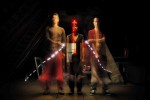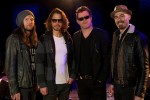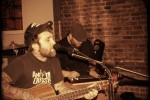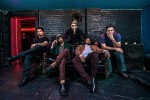“We call it American Gypsy, because it wanders but isn’t lost. Its a tramp, you can’t get lost when you’re in love with where you are.”
Formed in 2011, songwriter/director Antony Ablan began his search for a band–a group of musicians that could handle, with grace, the wildly eclectic and dynamic changes in mood of his writing. “It was several months of working with all sorts of great players before I found the right fit. When it clicked it was so obvious to me, I knew these were the right musicians, it finally worked.”
The virtuosic group developed quickly. “Once it clicked, things moved fast,” says Antony. The band soon found themselves headlining Chicago’s most notable venues, from Schubas to Lincoln Hall, to The Empty Bottle. They embarked on their first national tour in the fall of 2011, earning notoriety for their explosive live shows all the down to Texas and back. Swinging from gentle sunshine ditties to wild soaring epics, to dirty garage floor american gypsy, The Tramps had come into their own.
Upon returning to Chicago, full of fire, they began recording their ambitious debut album. Over 6 winter months, the band created a completely independent, full length album. Its not a studio album, and its not a live record. Making use of portable recording gear they were able to record anywhere, at any time, with unbound freedom to experiment with sound for their anticipated debut.
“We had two guiding concepts for this album,” Antony says. “We wanted the texture to be ‘wooden-electric’, and we wanted the narrative and imagery to be a ‘movie for your ears’. The band brought on engineer Matt Livensparger to realize their vision. Matt recalls: “When he called me at 4 in the morning to tell me the album needed to sound wooden-electric, I knew exactly what he meant. Antony came to me with concepts, textures, feeling, scenes for this album, but he isn’t a technical person, so I stepped in to make those ideas into sound–the mic placements, the room choices, and so on. He’d direct the music and musicians with imagery and emotion, never musical or technical terms. I was there to capture these amazing musicians performing.”
The band recorded the album like making a movie, choosing locations to suit the scene. Enormous recital halls, warehouse hallways, cavernous train underpasses, intimate bedrooms, tiny closets. “We weren’t stuck in the studio trying to fake it, we could choose the room like choosing an instrument, and it affected the musician, it evoked something in us that inspired the music, inspired the scene we were recording,” Antony says.




